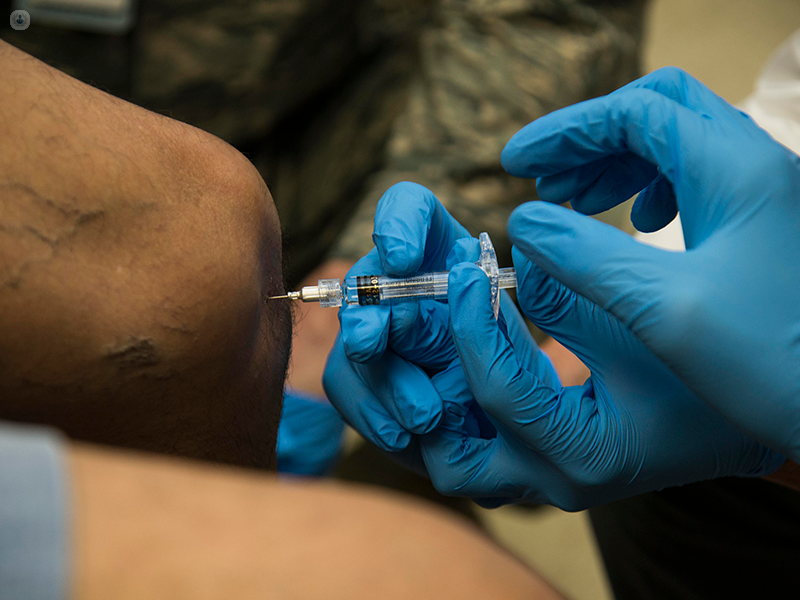Lipogems and osteoarthritis: a patient guide
Written by:Lipogems injections are now available at an increasing number of clinics across the UK, promising a new way to treat osteoarthritis without surgery. In this article, leading sports medicine specialist Dr Ralph Rogers has written a patient guide to Lipogems, covering how it works, who it’s suitable for, and how long the results last.

Osteoarthritis: an overview
Osteoarthritis is a disease of the joints, whether it's knees, hips, ankles, lower back, or neck. Some people will call it a wear and tear of the joint surface, which is the cartilage. It is a degenerative condition, which means that over time is gradually becomes worse.
Osteoarthritis causes pain and inflammation in the joint. This kind of pain is chronic, as opposed to acute. It can be described as a dull ache, and when you move the joint it hurts even more.
Normally, osteoarthritis is treated with non-steroidal anti-inflammatory drugs or physiotherapy. In severe cases, we might consider surgery. However, more recently a number of treatments have emerged in the field of regenerative medicine, with the promise of improving symptoms without surgery.
Regenerative medicine is simply the process of regenerating, replacing or engineering human tissue and taking this tissue and putting it where there's damaged tissue. Lipogems injections is one way to achieve this.
Lipogems: the basics
Lipogems is an outpatient operation procedure performed under local anaesthetic.
We harvest about 60 millilitres of fat, mostly from your abdomen. We then process this fat. It's important to know that in this fat, there are cells which help to stimulate a regenerative environment, including cytokines, exosomes, and growth factors. Together, these stimulate a whole cascade to create a regenerative micro-environment within joints.
What can Lipogems be used to treat?
Lipogems can be used in a number of different pathologies. However, I use it for degenerative orthopaedic conditions. People who have chronic knee pain, ankle pain, shoulder pain are all candidates for Lipogems.
These people are also important because some people don't want surgery, some have had surgery in the past that didn't work, and some can't have surgery for other pathologies. So there are many people who are candidates for Lipogems treatment.
What happens after the Lipogems injection?
Once you have had Lipogems injected, you must rest for about two weeks.
After this, it's very important to have rehabilitation. Your rehabilitation program could take anywhere from four to six weeks. The main aim is to build the muscle mass around your joints.
From there, Lipogems can last anywhere from two to three or three to five years. Current research findings show that after this period the effect tends to wear off. That's not to say that you can't prolong the effects. Lipogems is a non-surgical treatment and it can be repeated, so you can continue to enjoy the effects long into the future.
If you're interested in Lipogems treatment from a leading sports medicine specialist such as Dr Rogers, visit his Top Doctors profile to arrange an appointment.


